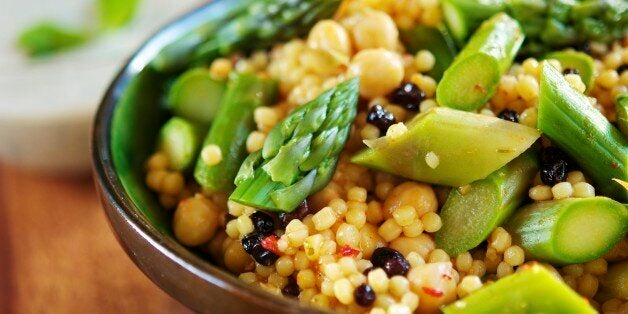
One of the main questions about vegetarianism that perturbs meat-eaters and would-be veggies is this: how do you get enough protein in your diet?
We all know that protein is a staple part of any diet, not only is it crucial for muscle growth and repair, but it's a fantastic source of fuel.
But while there are plenty of plant-based proteins (we're looking at you, quinoa), not all proteins are created equal.
There are 20 amino acids in total that combine to make protein, nine of which can't be produced by the human body. These are known as the "essential" amino acids, as we need to ingest them through our diet.
A "complete" protein contains an adequate amount of all of the essential amino acids. Meat is a complete protein (sob), but there are plenty of plant-based "complete" proteins too.
Plant-based complete proteins include:
Soya beans & products (tempeh, tofu)
Quinoa
Amaranth
Buckwheat
Chlorella & spirulina
Vegetarian sources of animal proteins:
Eggs (preferably free range or organic)
Dairy products
"Of course, it's not essential - or even possible - to eat these complete proteins all the time, you can also mix other proteins, called ‘protein combining’, to create a complete protein," explains nutritionist and founder of Wild Nutrition, Henrietta Norton.
"Many cultures that traditionally follow a vegetarian way of eating, use this method of ‘protein combining’."
SEE ALSO:
This Is Why Vegetarians Could Live Longer
This Vegetable Art Will Kick Start Your Healthy Eating Regime
'Protein-combining' may seem like something you'd do wearing a white coat in a lab, but Norton explains that it's surprising easy.
"All you need to do is mix two of any of these three groups within a twelve hour period, it's best if you can combine within one meal where possible."
Group One: Whole Grains
Brown rice
Barley
Rye
Millet
Oats
Wholegrain Pasta
Group Two: Nuts/Seeds
Sunflower, hemp, sesame, pumpkin seeds
Seed sprouts
Almonds
Walnuts
Cashew nuts
Nut butters
Group Three: Legumes
Chickpeas
Peas
Black eyed beans
Kidney beans
Bean sprouts
Examples of these combinations could include: vegetable and bean con carne with brown rice, chickpea humous on rye bread or vegetable & black eyed bean stir-fry with cashew nuts and brown rice noodles.
"Try to mix all of these rather than rely on one food source such as dairy. Instead include complete and combined plant proteins in your diet," Norton adds.
In need of some more veggie inspiration? Check out the recipes below...